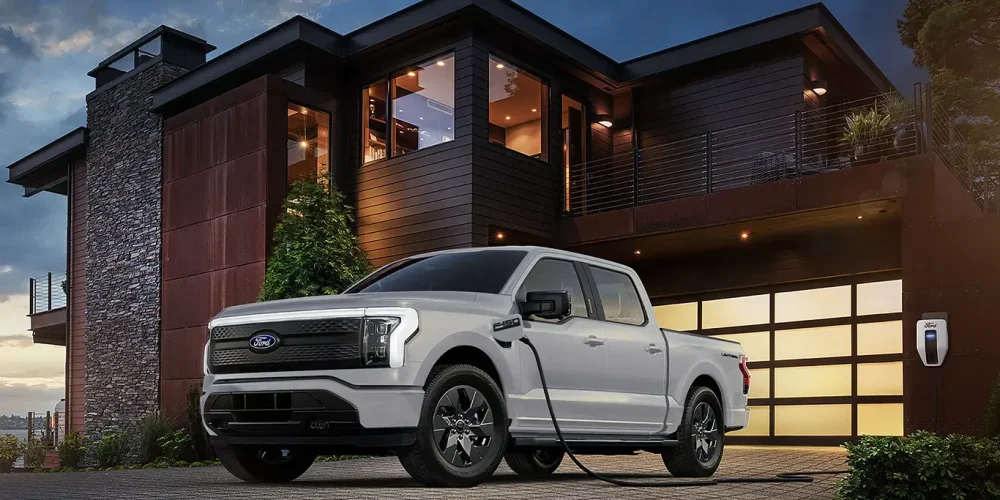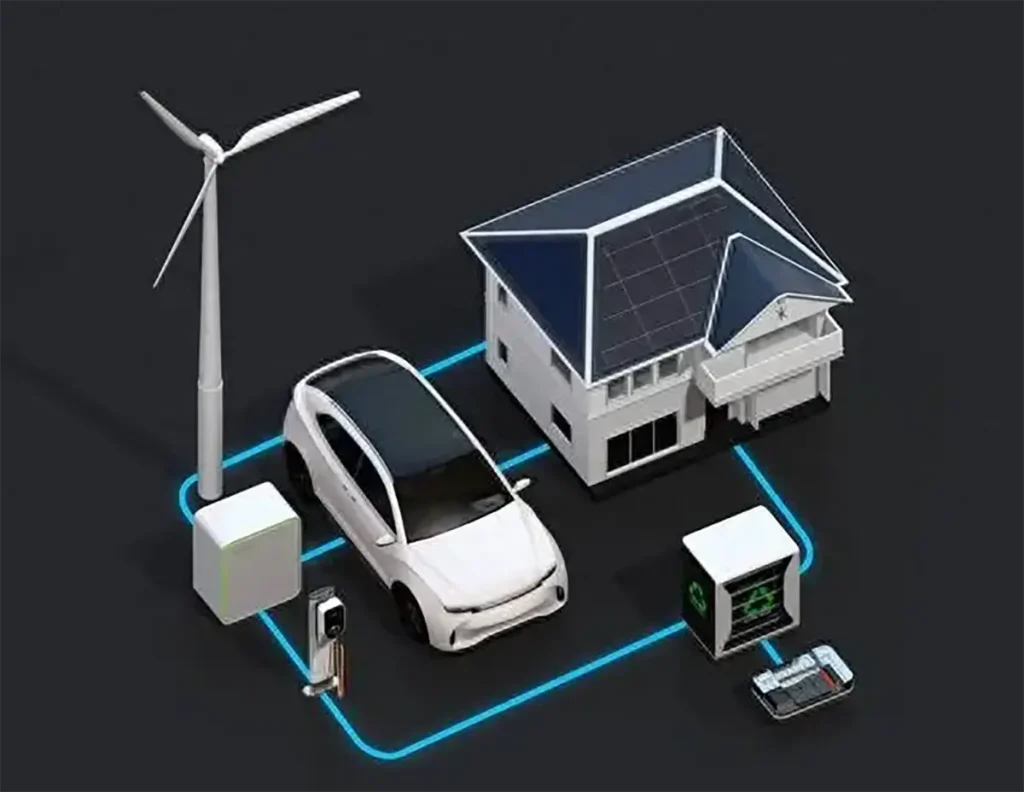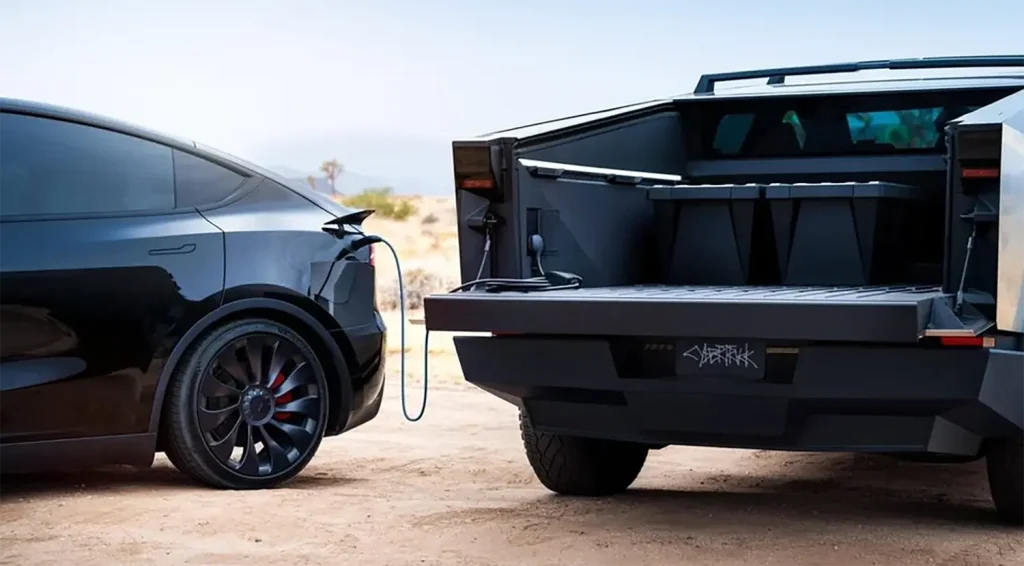
EV charging tech is progressing at a serious pace, and it’s moving beyond just filling batteries. We’re talking about bidirectional EV chargers. And the potential here is huge, letting cars send power back to our homes or perhaps the grid. Your car becomes a mobile power source. Arguably, this is a major shift.
But how does this hardware really work, and is it well worth the investment?
Let’s find out…

The Basics of EV Charging
So, let’s talk basics. For a while now, conventional EV charging has been a one-way street. Power flows from the grid, through the charger, and straight into your car’s battery. That’s pretty much it. This process is called unidirectional charging, and it does exactly what you’d expect: it fills up the battery so you can drive.
Now, within this, there are two main types: AC and DC.
AC chargers (Level 1 and 2) are common for home use. They send AC power to the car’s onboard charger, which then converts it to DC for the battery.
Whereas DC fast chargers—those massive units you see at service stations—do the conversion outside the car. They pump DC power straight to the battery. Hence, they are much, much faster.
That being said, this entire one-way relationship is what’s changing. Bidirectional chargers are, well, different. They completely disrupt this simple “grid-to-car” flow.
What is Bidirectional Charging and How Does it Work?
So, let’s get specific. We just established that conventional charging is, a one-way street. Well, bidirectional charging, as the name sort of implies, makes it a two-way street.
The power does not just flow in to the vehicle; it can be directed to flow out again. Thereby, your EV stops being just a car and becomes, in simple terms, a big battery on wheels. A mobile power bank, if you will.
But how does it actually work? The key, you see, is not in the car alone, it’s in the charger as well.
Your EV’s battery stores power as DC (Direct Current). Whereas, your home, your appliances, and the electrical grid all run on AC (Alternating Current).
A standard unidirectional charger’s main job is converting AC power from your wall into DC power for the battery.
However, a bidirectional ev charger has a much more sophisticated hardware inside: a special inverter. This device can do the reverse. It can take that high-capacity DC power stored in the car and “invert” it back into usable AC power. Hence, you can send that power to your home (V2H) or, perhaps, even sell it back to the grid (V2G).
The Main Modes of Bidirectional Charging
Bidirectional charging is not just one single thing. It’s kind of an umbrella concept, which people in the industry call V2X, or Vehicle-to-Everything.
The “X” can stand for a few different things, depending on where that power is going.
But overall, there are four main modes you’ll hear about.
1. V2H (Vehicle-to-Home)

Simply, V2H allows your car to function as a generator for your entire house. Therefore, if a storm knocks out the power, your EV could keep your lights, refrigerator, and (thankfully) your internet running for… well, perhaps a couple of days, depending on your car’s battery and your home’s usage.
However, this is not simply plug-and-pl·ay. It requires a special home gateway and installation to safely disconnect you from the grid and manage the power flow.
Also Read: Do You Need a Permit to Install an EV Charger at Home?
2. V2G (Vehicle-to-Grid)
Now, V2G is arguably the most complex but also the most powerful concept. Here, the energy does not just go to your house; it’s sent all the way back to the electrical grid itself.
Why would you do this?
Well, money, honestly.
The utility company could pay you for that power, particularly during peak demand hours (like a hot summer afternoon) when the grid is strained. Your car helps prevent blackouts for everyone, and you get a check. Albeit, this requires deep integration with the utility, and as of now, it’s the least common mode.
3. V2L (Vehicle-to-Load)
This one is simpler, and it’s already available on several EVs. V2L basically turns your car into a high-powered, mobile generator. You don’t need a big home installation. You just use a special adapter that plugs into your car’s charge port, giving you standard AC outlets.
Therefore, you can run power tools at a worksite, electric grills for tailgating, or even a projector for an outdoor movie night. Oddly simple, but incredibly useful.
4. V2V (Vehicle-to-Vehicle)

And then there’s V2V. It’s exactly what it sounds like: using your EV to charge another EV.
You see, it’s somewhat like V2L, but instead of powering a tool, you’re giving a direct boost to a friend who’s, you know, low on battery.
Perhaps not an everyday thing, but it’s the modern, high-tech equivalent of giving someone a jump start.
Which Electric Cars Have Bidirectional Charging?
Bidirectional charging is kind of a two-part problem. It relies on both the charger and the vehicle being capable of that two-way flow. Honestly, even if you go out and buy a fancy bidirectional charger with its own converter, it’s just an expensive wall box if your EV can’t actually send power back. Therefore, you really need a compatible set.
Having said that, the list of bidirectional-capable EVs is growing. Albeit, as of 2025, it’s still somewhat limited. Here’s what’s reportedly available as per our knowledge:
- Tesla Cybertruck
- VW ID Models
- KIA EV6
- Hyundai Ioniq 5
- BYD Atto 3
- BYD Han EV
- Ford F-150 Lightning
- Cadillac Escalade
- Chevrolet Blazer EV
- Chevrolet Equinox EV
- Chevrolet Silverado EV RST
- Lucid Air
- MG ZS EV (2022)
- Mitsubishi Outlander PHEV
- Nissan Leaf ZE1
- Outlander PHEV
On the whole, nearly all of these models are capable of at least V2L charging. The main exceptions are the pioneers like the Nissan Leaf ZE1 and Outlander PHEV, which were barely more focused on V2H/V2G.
Real-World Applications: Ford F-150 Lightning and Tesla Cybertruck
Two of the most notable examples of bidirectional capability in the U.S. market are the Ford F-150 Lightning and Tesla Cybertruck.
Ford F-150 Lightning — Proven V2H in Action
The Ford F-150 Lightning is currently one of the most practical demonstrations of V2H (Vehicle-to-Home) in the real world. Through Ford’s Intelligent Backup Power system, the truck can automatically power a home during grid outages. When connected via the Ford Charge Station Pro and Home Integration System (developed in collaboration with Sunrun), the Lightning can provide up to 9.6 kW of power output — enough to run most household essentials for three to four days, or longer with solar integration.
This system automatically disconnects your home from the grid when an outage occurs, preventing backfeed and keeping the setup safe and compliant with utility standards. It’s a turnkey V2H solution already in use by thousands of owners across the U.S.
Tesla Cybertruck — V2H Potential and Requirements

The Tesla Cybertruck also introduces bidirectional capability, though Tesla refers to it as PowerShare. This feature allows the vehicle to deliver up to 11.5 kW of power through its onboard AC inverter, enabling V2H, V2L, and even V2V functions.
To enable V2H at home, Cybertruck owners will need:
- Tesla PowerShare Home Backup System – Includes an inverter, gateway, and transfer switch that allow the vehicle to safely disconnect your home from the utility grid during backup operation.
- Tesla Wall Connector (PowerShare compatible) – as a bidirectional ev charger, For daily charging and bidirectional power transfer.
- Certified installation – Conducted by a Tesla Energy-approved electrician to ensure NEC compliance and system safety.
When properly configured, the Cybertruck can provide backup power similar to Tesla Powerwall systems — running household appliances, lights, and HVAC systems during outages. However, Tesla emphasizes that PowerShare systems must be installed with isolation equipment to prevent reverse power flow to the grid.
Both vehicles illustrate how bidirectional technology is evolving from theory to reality, setting the standard for energy resilience and smart-grid integration in the coming decade.
In Closing
For a long time, cars were simply transportation. Bidirectional charging changes that relationship. It transforms your EV into a key part of your home energy system. While the cost and complexity remain barriers, it’s clear that this is where the future is headed. In the next decade, we may look back and wonder why our cars ever just sat there, doing nothing.
Across the United States, the Department of Energy (DOE) and its national laboratories are actively supporting bidirectional EV charger development through pilot projects and grants. Programs such as the DOE V2X Initiative and National Renewable Energy Laboratory (NREL) V2G Demonstration Projects are testing real-world applications of vehicle-to-grid and vehicle-to-home technologies in multiple states, including California, Texas, and New York. These efforts aim to integrate EVs into a smarter, more resilient electric grid and make home backup power a standard feature for future vehicles.
As utilities and automakers align under federal clean energy goals, the growth of bidirectional EV charging will not only enhance energy security but also empower homeowners to participate directly in the energy ecosystem. For drivers considering the next generation of smart energy solutions, investing in a bidirectional EV charger may soon become as essential as owning the EV itself.
